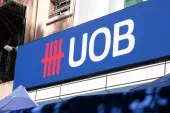3 practical steps Asian banks can take to respond to regulatory change
By Theo HildyardThe ongoing Libor scandal is one of the most serious breaches of control in an industry where risk and compliance failures are routinely front page news.
At a time when the reputation of the financial industry could not be weaker, the scandal has further shaken the trust and faith society places in this vital part of our global infrastructure.
And the scandal shows no sign of going away with regulators around the world placing a further 16 financial institutions, in addition to Barclays, RBS and UBS, under investigation in UK, Europe, USA, Singapore, Japan and Korea.
As authorities continue to investigate banks’ operations and possible involvement in rate-rigging, reports of widespread and serious market manipulation in Asia have started to emerge.
Earlier this year, Reuters reported that the Monetary Authority of Singapore (MAS) found evidence of electronic communication amongst traders from several banks about what rates they were going to submit for the local banking association's fixings for non-deliverable foreign exchange forwards (NDFs).
While the jury is still out as to how the authorities will deal with these reports, banking institutions in the region should start preparing for far reaching regulatory change and stricter rules that will, in all likelihood, severely impact their operations in Asia.
Here are 3 practical steps that banks can take to pre-empt new regulation and prepare for change.
#1: Assess existing resources
Research firm Ovum found that senior IT buyers from banking are on the lookout for innovative systems and control solutions that improve efficiency as reforms increase operating costs.
Technology spending throughout financial markets is expected to grow from $73.4bn in 2012 to $76.2bn in 2013.
Yet with banks facing constrained budgets and cuts to operating costs, a logical first step when responding to change is to look to existing systems and resources to determine if they are capable of rapidly responding to regulatory change.
It is possible that the bank already has technologies in place that are ready to respond to change with the minimal disruption.
For vendor led solutions, a far sighted vendor may already be investing in new capability ahead so the regulation being finalised. For in-house solutions, the solution may have been engineering in such a way as it is possible to add new controls and scale out the coverage.
However, with a history of underinvestment as compared to front office technology, compliance technology is often characterised by inflexible point solutions that do not lend themselves to rapid and cost effective enhancements.
Programme Managers should look get a clear view of how systems will need to change as well as to identify available resources and determine if those resources can implement the change quickly. If the mountain is simply too sleep to climb, it is better to ring fence budget early and plan for a new programme of work.
#2: Consider how actions by a regulator in one jurisdiction will impact your operations in other parts of the region
Unlike Europe, Asia is a highly fragmented market with more currencies, exchanges and regulatory jurisdictions. Yet despite the fact there is less regulatory integration, the actions of the Singapore authorities could easily cascade into the other markets.
Banks will need to be prepared for similar compliance regulation in other markets such as Malaysia, Indonesia, Thailand and Philippines.
We have seen how the plethora or regulatory changes implemented by the MAS over the past few years - from Licensing and Conduct of Business to Financial and Margin Requirements Regulations - sets the benchmark and other regulators in the region soon followed suit.
When this happens, it is the responsibility of the Chief Compliance Officer (CCO) to ensure that the company is compliant with laws, regulations and internal policies while minimising disruptions to operations as much as possible.
CCOs therefore, should take an enterprise-wide approach to ensure preparations for change occur across the region.
It may be necessary escalate the business case for new compliance technology to the highest levels of the organisation to ensure consistency in approach and funding for potentially large and international regulatory change programmes.
#3: Acting on the change
When the regulators finally act, banks need to mobilise resources rapidly - both budget and people. CIOs should immediately start gathering internal support to ensure that they are prepared to comply within the timeline issued by the authorities.
Where existing systems are not equipped to respond to these compliance orders within the timeframe given to them, there is clearly a case for new technology.
Firms will want to consider the extent to which new solutions can be customised and adapted to future change so as not to be in the same position when the next crisis occurs.
A pre-emptive analysis of the likely regulatory landscape and plan of action to respond to change will help banks map out their strategy for the next 12 months as they anticipate the actions of regulators.
Furthermore, if an institution can demonstrate it has been pro-active ahead of new regulation, it will likely be subject to less scrutiny from the regulator and have more run-way to execute their plan.
By acting on the three steps above, CIOs, CCOs and managers will be better prepared to comply within the timeframe issued by the authorities as well as minimise disruption to their operations.
After all, the way to overcome the challenges of modern financial regulation is to future proof tomorrow’s business today.




















 Advertise
Advertise










